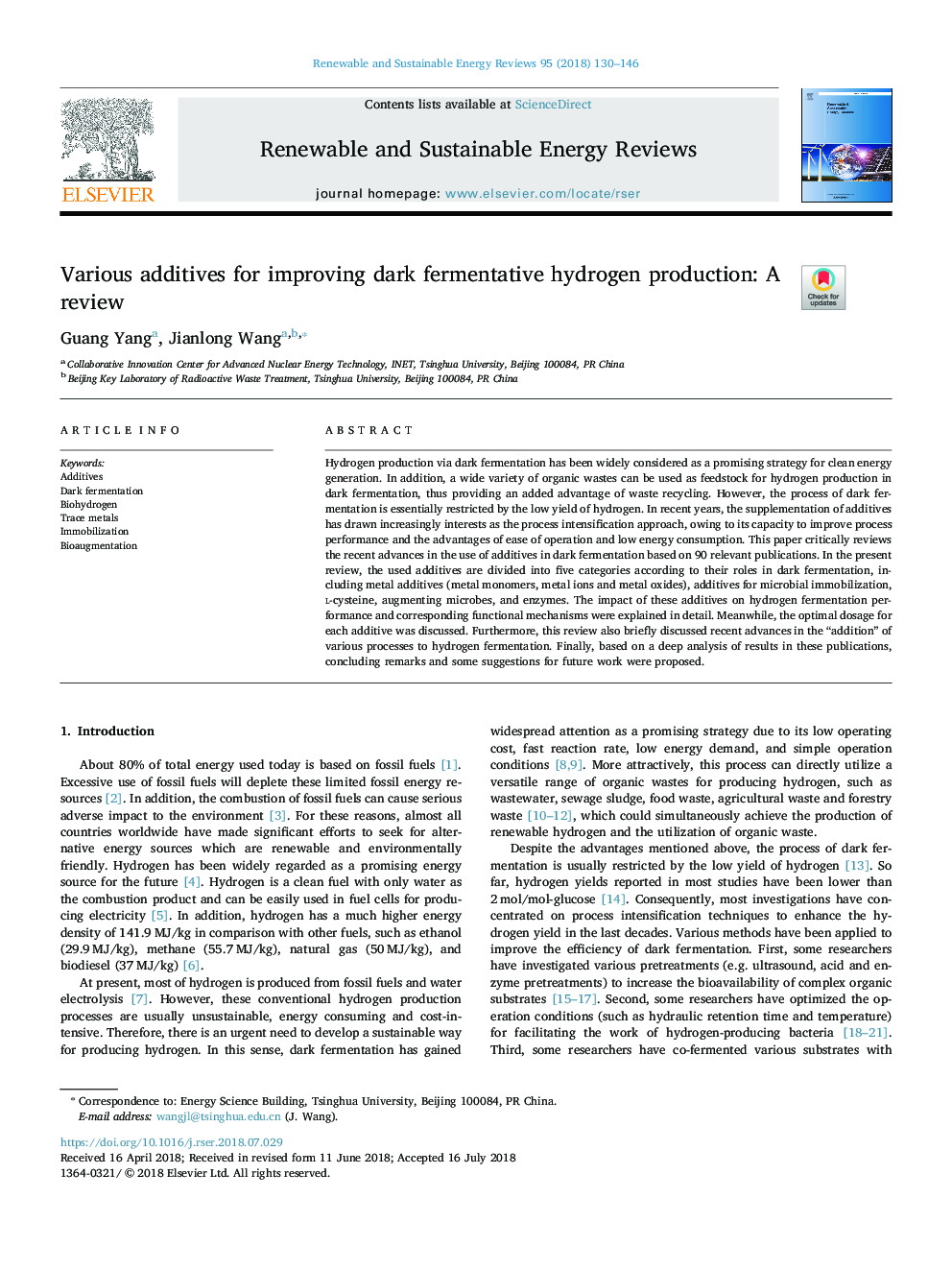| Article ID | Journal | Published Year | Pages | File Type |
|---|---|---|---|---|
| 8110282 | Renewable and Sustainable Energy Reviews | 2018 | 17 Pages |
Abstract
Hydrogen production via dark fermentation has been widely considered as a promising strategy for clean energy generation. In addition, a wide variety of organic wastes can be used as feedstock for hydrogen production in dark fermentation, thus providing an added advantage of waste recycling. However, the process of dark fermentation is essentially restricted by the low yield of hydrogen. In recent years, the supplementation of additives has drawn increasingly interests as the process intensification approach, owing to its capacity to improve process performance and the advantages of ease of operation and low energy consumption. This paper critically reviews the recent advances in the use of additives in dark fermentation based on 90 relevant publications. In the present review, the used additives are divided into five categories according to their roles in dark fermentation, including metal additives (metal monomers, metal ions and metal oxides), additives for microbial immobilization, L-cysteine, augmenting microbes, and enzymes. The impact of these additives on hydrogen fermentation performance and corresponding functional mechanisms were explained in detail. Meanwhile, the optimal dosage for each additive was discussed. Furthermore, this review also briefly discussed recent advances in the “addition” of various processes to hydrogen fermentation. Finally, based on a deep analysis of results in these publications, concluding remarks and some suggestions for future work were proposed.
Related Topics
Physical Sciences and Engineering
Energy
Renewable Energy, Sustainability and the Environment
Authors
Guang Yang, Jianlong Wang,
